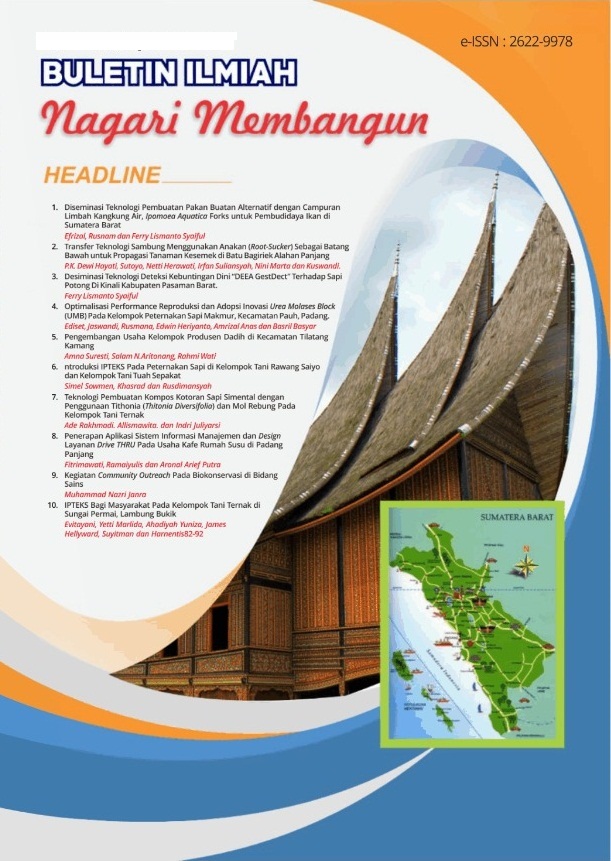PENGEMBANGAN KREATIVITAS MASYARAKAT UNTUK MENCIPTAKAN DESA MANDIRI DI NAGARI GURUN PANJANG BARAT
Abstract
The purpose of this activity is to conduct socialization and assistance of the program to be carried out. The program was made based on unresolved issues and finding solutions for the community. In this case, the method of implementing this activity starts with identifying the problem. The method is, for example, by mapping the existing problems and monitoring the implementation during activities. The method used in this activity by moving the PKK (Family Welfare Empowerment) mothers. We also give outreach to the PKK to produce an understanding of the programs that will be run. Nagari Gurun Panjang Barat, including the village, which has many cattle, but so far, the cow dung has never been used. In general, people are not familiar with renewable energy from cow manure, which can be used as raw material to produce biogas. The processing of cow dung is alternative biogas energy, with many benefits, in addition to household fuel, biogas produces organic fertilizer. This understanding will be given to the community that cow dung can be used as biogas where the gas produced by anaerobic activity or fermentation of organic materials, be it animal, human or other faeces. The main content in biogas is methane (CH4) 60% and Carbon Dioxide (CO2) 38%. If the methane in biogas burns, the energy produced is cleaner than coal, and this causes carbon dioxide emissions to decrease. Manure from 2 cows per day produces biogas 2 m3, where for 1 m3 biogas, equivalent to 0.46 kg of LPG, 0.62 litres of kerosene, and 3.5 kg of firewood. During this time, the community is not aware that cow dung has economic value. Also, PKK mothers are trained to move MSMEs by making women's accessories, which can add value to their income.
Downloads
References
Maulana Arifin, A. S. (2011). Kajian Biogasi Sumber Sebaga Sumber Pembangkit Tenaga Listrik Di pesantren Saung Balong - Al Barokah, Majalengka Jawa Barat. Mechatronics, 73-78.
Putro, S. (2007). Penerapan instalasi sederhana pengolahan kotoran sapi menjadi energi biogas di Desa Sugihan Kecamatan Bendosari Sukoharjo . WARTA, 178 - 188.
Rahmi, D. Y. (2020). Hidroponik sebagai bentuk pemanfaatan lahan sempit untuk peningkatan pendapatan rumah tangga di Nagari Sungai Kamuyang. Hilirisasi IPTEKS, 2621-7198.
Renny Eka Putri, Andasuryani, Feri Arlins, Santosa, Azrifirwan, dan Irriwat Putri (2019). Pemberdayaan masyarakat melalui penerapan teknologi biogas. Hilirisasi IPTEKS, 2621-7198.
Yanti, D., Santosa, S., Ekaputra, E.G., Mislaini, M., Chatib, O., dan Irsyad, F., (2019). Pemanfaatan sludge hasil ikutan biogas dari kotoran sapi untuk pembuatan kompos. Hilirisasi IPTEKS, 97-103.
Fadli Irsyad, Delvi Yanti, Andasuryani (2018). Sosialisasi dan pelatihan pemanfaatan biogas dari kotoran ternak dan jerami padi sebagai sumber alternatif ramah lingkungan. Buletin Ilmiah Nagari Membangun, 2622-9978.




















